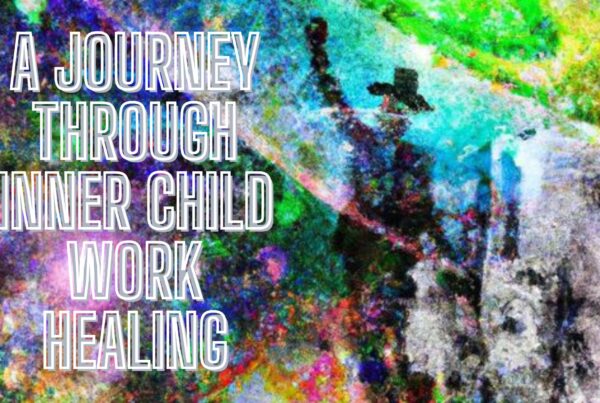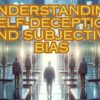Book Review: Resource Therapy Primer
Gordon Emmerson, PhD
My first experience of Resource Therapy
It's been quite some time since I last experienced Resource Therapy.
Going back in time (yes, metaphor intended), I was studying my Diploma of Hypnotherapy when I had the pleasure of Gordon Emmerson himself showing our class an introduction to the therapy over a weekend.
As you would expect from someone who has written and taught so much of it, he made it look effortlessly easy.
I recall my first 'attempt' at utilizing Resource Therapy with a client. Everything seemed to be going according to plan, vivifying the experience and bringing in the introject (more on these after) in order to release his expression only to find that, instead of a 'you were never there for me' moment, it was an 'I love you' moment. This wasn't how it was supposed to go! In that moment, I quickly improvised to allow him to know that this love will always be with him, to support him and guide him through difficult times. Phew!
Only recently, I had begun to feel a fascination with the therapy again. I remember my dear friend and fellow hypnotherapist Joe Busuttil saying to me once that, after a while, you begin to notice similarities in different therapies. You begin to notice where they 'kind of' overlap. As I had been doing quite a bit of research into age regression and inner child work, coming back to Resource Therapy seemed to make a little more sense this time around.
Now that I have explained the 'why' in coming back to Resource Therapy, I guess I should explain a little more of the 'what' with Resource Therapy for those who may not have heard or experienced it before.
What is Resource Therapy?
Resource Therapy is an evolution from Ego State Therapy which, in itself, is an evolution from Parts Therapy. Within it, there are also elements of Gestalt Therapy and Age Regression thrown in.
Resource Therapy works from the belief that our personality is made up of parts.
As we move through our day, various parts may become conscious and guide our behaviours. For example, imagine that you're at work. For most of the time, you may feel confident and productive in what you do. Consider, what would you call this part of you? Then imagine that you're asked to do a presentation in front of a large group of people at work. You may feel nervous and anxious. Consider what you would call this part?
We often hear people talk about their in-congruent parts quite openly. How often have you heard someone say, “I think I should do [xx] but part of me doesn't feel right about it”? We have an innate ability to recognize when our parts are in conflict.
In Resource Therapy, when a part holds onto unwanted emotions, it is referred to as a 'vaded state'. For example, when a resource state is vaded with fear, we may experience phobias or panic, or when a resource state is vaded with disappointment, we may experience depression or despair.
A resource state (another name for a 'part') may also be retro, meaning that they exhibit unwanted behaviours such as antisocial behaviour, pouting, passive aggressive behaviour, addictions, OCD and eating disorders.
Parts may also be Conflicted state with each other, or in a Dissonant state where a part(s) is conscious at the wrong time. A Conflicted state may experience procrastination, sleep disturbances, chronic fatigue and cognitive dissonance while Dissonant states may experience frustration in coping ability, feelings of ineptitude, inability to be real self, writer's block or below par performance.
Within Resource Therapy are a series of techniques called Actions, of which there are 12 main actions and 3 additional complementary actions. Utilising these actions will take a pathological part and return it to being a normal state.
Often the first step is to vivify a specific instance when the problem state was being experienced. This would be used to bridge back to the sensitising experience. At this point, an introject may be brought in by the client. An introject is an internalized impression, generally of a person, but it could also be an animal or an inanimate. The client will be able to express at this point and, in some instances, allow the introject to respond before the clients decides if the introject should stay in that space or leave.
The following steps look at relief for the client and finding resources that they already have internally (quite an Ericksonian concept) to aid them in a new way of being.
Another series of actions is not too dissimilar from a Gestalt style 'empty chair' technique where the client would alternate between chairs talking between their self and their introject, or potentially negotiating between parts, especially if they're parts that have struggled to get along harmoniously.
Lastly, an action looks at an imagery check to future pace an to ensure that the problem is now gone by testing with a visualisation of an instance that would've caused the problem state to come forward in the past.
Clearly, this is a sweeping big picture overview of what is quite a sophisticated and detailed therapeutic approach. I learned this first hand when I first attempted some of the actions after watching Gordon make it look simple as pie! It goes without saying that, for those truly interested, proper training in Resource Therapy is going to be extremely beneficial for you.
In the meantime though, the 'Resource Therapy Primer' is an excellent way to get your head around the basics of Resource Therapy, looking at each action in detail as well as offering up various different client presenting issues and what approaches can be taken with them from a Resource Therapy viewpoint.
Given how inexpensive this book is on the Australian Amazon Kindle store, you would be crazy not to invest that money and at least get your head around these concepts.
You can find Gordon Emmerson talking about Resource Therapy in this interview.
You can purchase the 'Resource Therapy Primer' from Amazon Kindle Australia, from Book Depository, and you can see all the Actions in action on the Resource Therapy International Youtube page.
You can also look at the office Resource Therapy International webpage for their online store and live training.
Book Your FREE Half Hour Consultation With Release Hypnosis NOW!
You may also like to read:
Book Review: The Five Second Rule
Book Review: The Consolations of Philosophy
Book Review: Healing The Shame That Binds You
Book Review: The Happiness Trap








